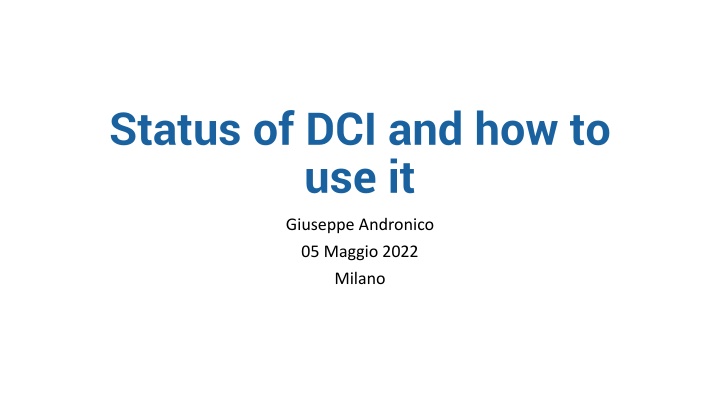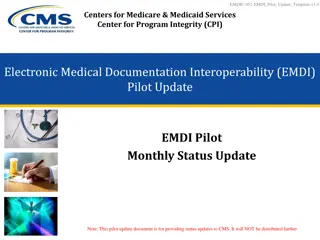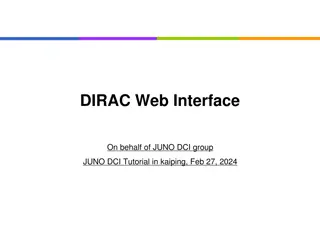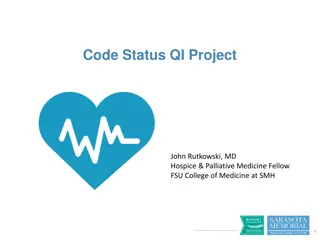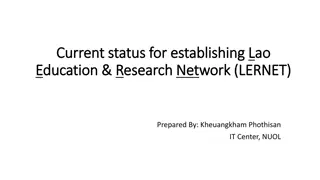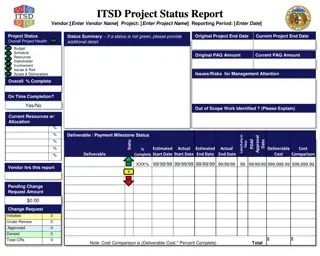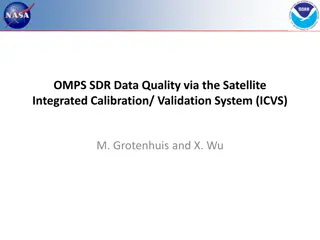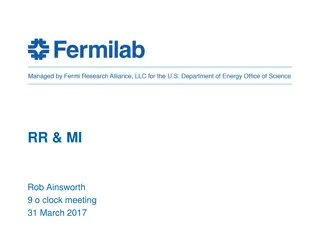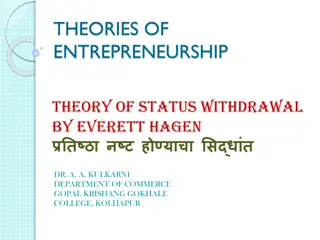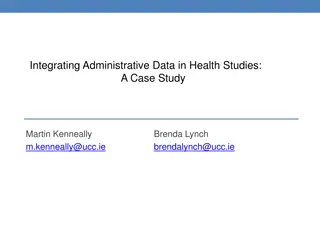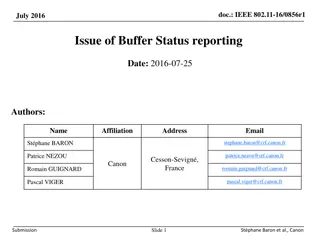Status of DCI and How to Use It Overview
DCI (Distributed Computing Infrastructure) comprises resources, services, protocols, and standards essential for data and software distribution, authentication, job management, computing elements, data management, storage, file transfer, and more. The system has been actively transferring large datasets between data centers with high speed and efficiency, with upcoming tests to ensure seamless functionality. New services such as monitoring, user support, and operations are on the horizon to enhance DCI's operational efficiency. Integration with tools like RUCIO and IAM is in progress to update and improve the infrastructure.
Download Presentation

Please find below an Image/Link to download the presentation.
The content on the website is provided AS IS for your information and personal use only. It may not be sold, licensed, or shared on other websites without obtaining consent from the author.If you encounter any issues during the download, it is possible that the publisher has removed the file from their server.
You are allowed to download the files provided on this website for personal or commercial use, subject to the condition that they are used lawfully. All files are the property of their respective owners.
The content on the website is provided AS IS for your information and personal use only. It may not be sold, licensed, or shared on other websites without obtaining consent from the author.
E N D
Presentation Transcript
Status of DCI and how to use it Giuseppe Andronico 05 Maggio 2022 Milano
DCI overview DCI is made from resources, services and protocols and standards Services Data and SW distribution: CernVMFS, Frontier Authentication and Authorization: VOMS, IAM (upcoming) Job management system: WMS Computing Element: HTCondorCE Data Management System: DFC(Dirac File Catalogue) and RFC (Rucio File Catalogue) Storage Element: dCache, StoRM, EOS File Transfer Service: FTS Web interface: DIRAC Protocols and standards Resources Authentication and Authorization: X509 4 data centres active, 1 upcoming Data management: SRM Data transfer: Gridftp (End Of Life) http (webdav) XRootD Network to connect centres and users
Using and testing DCI Large transfers has been done between data centers with high quality and good speed in 2021 30TB Machine Learning examples transferred to JINR in ~17 hours,~4.7Gb/s 29TB Atmospheric neutrino transferred from CNAF to JINR in ~32 hours, ~3Gb/s 100TB calibration data, ~ 772055 files from IHEP to CNAF and JINR, ~5Gb/s First Data Challenge More test upcoming to be sure all is working properly: Tape test: to verify that raw data migration to tape will happen flawlessly Network test: to better understand networks we are going to use and be sure configurations fit with our needs Readiness for data taking: to simulate data taking and check that all the parts will work properly Atmo examples transferred from CNAF to JINR ML examples transferred to JINR
Upcoming Some more new services needed to have DCI fully operational: Monitoring: to keep all the several parts under observation User support: to be ready to react when users or monitoring detect problems Operations: to fix problems found from monitoring and users; to improve DCI DCI is been kept updated with WLCG To this aim we are working to integrate: RUCIO, improved Data Management System with more features, already used from several other HEP experiments like ATLAS, BELLE II IAM, an improved authentication and authorization model that will replace VOMS (End Of Life)
Data flows proposal Data flows proposal IHEP will receive data from experimental site and store them in master repository. At IHEP will run fast calibration and prompt reconstruction 1. IHEP main repository will be automatically replicated at CNAF 2. From CNAF data will be copied also to JINR 3. CC-IN2P3 will maintain a copy of part of the data at CNAF with the chance to access data physically at CNAF 4. JINR data will be accessed from MSU resources Flows are bidirectional: data produced in European data centers (secondary reconstruction, analysis, simulations, ) will be replicated in the other European data centers and at IHEP 5
JUNO data volume Estimated: Raw data: 2PB/year Reconstructed data: 200 TB/year Analysis data: 20 TB/year
Registering in DCI Registering in JUNO VO managed by VOMS. Needed steps 1: 1. Obtain a X509 certificate You have to use your personal browser For INFN follow instructions here: https://wiki.infn.it/cn/ccr/x509/home/utenti/personale 2. Extract certificate from browser and prepare to use it 1 3. Register on JUNO VO hosted on https://voms.ihep.ac.cn:8443 1https://juno.ihep.ac.cn/cgi-bin/Dev_DocDB/ShowDocument?docid=7295
Using DCI: where I can access it Command Line Interface User Interface: Computer you can access at data centres configured to be accessed via ssh You have to copy your certificate here: then, obtain a proxy, a sort of pass to access DCI resources 1. source /cvmfs/dcomputing.ihep.ac.cn/dirac/IHEPDIRAC/v0r2-dev11/bashrc 2. voms-proxy-init --voms juno or dirac-proxy-init g juno_user Here you can browse files and submit jobs Details and examples in 2 and in 3 Web interface (DIRAC) In the same document on Slack some examples on how to use DIRAC web interface 2 Slack JUNO Italia (in channel Sniper, look for Riccardo Bruno slides posted on March 24, 2021) 3 https://juno.ihep.ac.cn/cgi-bin/Dev_DocDB/ShowDocument?docid=5105
Using DCI: data management Files in DCI are composed from: Physical File Name, that specify where physically the file is Logical File Name, a sort of short name that can refer to several PFN ( the different copies in data centres) LFN can be searched in file catalog to obtain PFN PFN are used to actually perform file operations: listing, creating directory, changing directory, changing permissions and ownerships, copying files, remove replicas, remove all Metadata can be implemented to provide additional info, also to improve search capabilities 4https://juno.ihep.ac.cn/cgi-bin/Dev_DocDB/ShowDocument?docid=7288 slides and video
Using DCI: job management When submit a job, DCI looks in all available resources; in this moment this means 4 data centres Usually you have to describe your job using a jdl file like this 2: Submission return a job identifier needed afterwards to check status and retrieve output In this example a very simple job, much more complex submissions are possibile using all jdl capabilities Xiaomei Zhang developed a tool suited to simply submit JUNO jobs, called JSUB 5 JobName = "mysimplejob"; Executable = "/bin/bash"; Arguments = "test.sh"; StdOutput = "stdout.out"; StdError = " stderr.err "; InputSandbox = { "test.sh" }; OutputSandbox = {"stdout.out","stderr.err" }; VirtualOrganisation = "vo.juno.ihep.ac.cn"; 5https://juno.ihep.ac.cn/cgi-bin/Dev_DocDB/ShowDocument?docid=7303 slides and video
Training activities Hands on training in Nantes, the day before EU JUNO Collaboration Meeting, May 16
Next improvements Capability to open a data file from DMS without download it But it requires to have a copy of the data in all data centers Move AAI from VOMS to IAM Add Rucio DMS Monitoring Operations User support
Manpower required People involved in DCI are not any more enough DCI group is urgently looking for sysadmins and developers DCI will mainly rely on data centres collaboration to find people need to operate in production Also, we need volunteers for deploying and testing user support and operations: Physicist, interested in better understand how DCI works, are more than welcome People already involved in other shifts that can dedicate some of their time Distributed in different time zones In parallel with principal activity To be trained (also this must be developed and tested) To operate in shifts 6 to dispatch tickets 6 to handle known and tracked problems or to allert experts
Thank you Any question?
